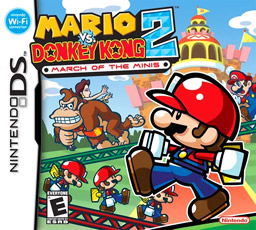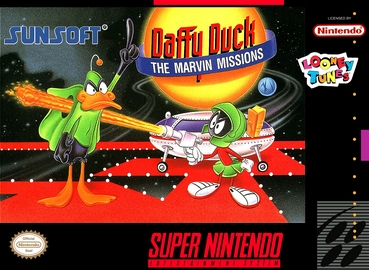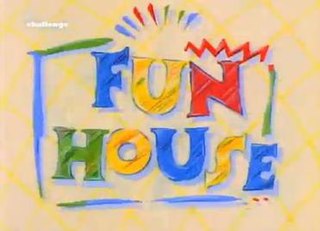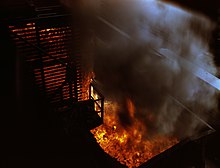
Tag is a playground game involving one or more players chasing other players in an attempt to "tag" and mark them out of play, usually by touching with a hand. There are many variations; most forms have no teams, scores, or equipment. Usually, when a person is tagged, the tagger says, "Tag, you're 'It'!" The last one tagged during tag is "It" for the next round. The game is known by other names in various parts of the world, including "running and catching" in India and "catch and cook" in the Middle East.

A first baseman, abbreviated 1B, is the player on a baseball or softball team who fields the area nearest first base, the first of four bases a baserunner must touch in succession to score a run. The first baseman is responsible for the majority of plays made at that base. In the numbering system used to record defensive plays, the first baseman is assigned the number 3.

Mystic Towers is an isometric platform game developed by Animation F/X, and published in 1994 by Manaccom domestically and Apogee Software internationally. Originally exclusive to MS-DOS compatible operating systems, it was re-released on Steam in 2015 with Microsoft Windows and Mac OS support. It stars Baron Baldric, an old wizard with a magic staff and an array of amusing mannerisms, who must quest through twelve towers and rid them of monsters. Mystic Towers is a sequel to Baron Baldric: A Grave Adventure, a platform game in which Baron Baldric battled an evil sorcerers ancestor.
The Eggerland (エッガーランド) series consists of several puzzle games developed by HAL Laboratory. Its first release was in 1985 for MSX computer systems. Many titles were made in the series and the gameplay is almost exactly the same in every game as well. Only a few changes were made over the years.

Mario vs. Donkey Kong 2: March of the Minis is a direct sequel to the Game Boy Advance game Mario vs. Donkey Kong released in 2006, which is a follow-up to the Game Boy Donkey Kong game, a partial remake of the original Donkey Kong with a greater focus on puzzle-solving. Gameplay involves the player controlling several Mini Marios with the touch screen, instead of Mario himself. The game also features the return of Pauline, last seen in the 1994 Donkey Kong. A sequel, called Mario vs. Donkey Kong: Minis March Again!, was released in June 2009.

Monster House is a third-person shooter survival horror video game developed by Artificial Mind and Movement and published by THQ. The game is based on the 2006 animated film of the same name. The game was met with mixed reception.
Four corners is a children's game, often played in elementary schools. The object of the game is for players to choose corners of the room and not get caught by the designated "It" player until they are the last remaining participant.

Daffy Duck: The Marvin Missions is an action video game for the Super NES. A different Game Boy game was released with the same title in North America, with the European Game Boy version known as Daffy Duck, and the Japanese Game Boy version is known as Looney Tunes Series: Daffy Duck.
The floor is made of lava can refer to:

The Munchables, known in Japan as Tabemon (たべモン), is an action-platform game developed by Now Production and published by Namco Bandai Games for the Wii video game console. The player controls the titular Munchables, creatures of insatiable appetite, who use their gurgitating prowess to consume enemies, which are known as "Tabemon Monsters", space pirates who have invaded the Munchables' home planet, known as Star Ving, and bear an uncanny resemblance to various foods.

Fun House is a British children's game show, based on the American show of the same name, that aired on ITV from 24 February 1989 to 29 December 1999. It was hosted by Pat Sharp, who was also aided by twin cheerleaders, Melanie Grant supporting the red team and Martina Grant supporting the yellow team. The announcer was Gary King. The theme tune was composed by David Pringle and Bob Heatlie. In 2000, it was revealed by the BBC programme TV's Finest Failures that a spin-off of Fun House featuring adult contestants was also planned. A pilot was produced, which included Carol Smillie as a contestant, but it was ultimately never broadcast.
Little Monsters is a British game show that aired on Sky One from the 4th of September to the 6th of November in 2003.

Toowoomba railway station is a heritage-listed railway station on the Western line at Russell Street, Toowoomba, Toowoomba Region, Queensland, Australia. It serves the city of Toowoomba, which is the junction for the Western, Main and Southern lines. The station has one platform with a passing loop, opening in 1867. It was designed by FDG Stanley and built in 1873 by R. Godsall. It was added to the Queensland Heritage Register on 21 October 1992.

Frankenstein's Monster is a platform game developed for the Atari 2600 video game console, based on Mary Shelley's 1818 novel Frankenstein; or, The Modern Prometheus . It was released by Data Age in 1983.
Ante Over is a children's game played in the United States and Canada, dating back to at least the mid-nineteenth century. The game requires a ball or any other small object and a barrier between the two teams over which the ball is thrown. It is played over a lower building that one can throw a ball over and be able to run all the way around it. The player calls out Annie-Annie Over and throws the ball over the building to the kids on the other side. If they catch the ball they can sneak around the building and throw the ball back or catch others and tag them. The players have to keep an eye open for them coming and beat them to the other side of the building. If a player makes it then that is their side but if they are tagged then they are on the other side. There can be an even number of kids on each side to start with. When there are three-four kids on a side they can split up and some go each way and then they don't know who has the ball. If the ball is not caught then they can wait a moment to try to fool the other players and then holler out Annie-Annie Over and throw the ball back. If the ball doesn't go over the building, the throwers can yell 'Pigtail!', and then try to throw it again. The ball must be caught in order to run around the building after other players. When the last kid on a team is tagged then that team wins.

Unreal is a video game released by Ubi Soft for the Amiga in 1990. The game, divided in 8 chapters, combined two different genres: In five levels, the player controls a pterodactyl-like creature in a pseudo-3D rail shooter environment. Three levels are side-scrolling platform games where the player controls a barbarian fighting monsters and solving puzzles. Ports for MS-DOS compatible operating systems and Atari ST were released in 1991.

Hot Lava is an action-adventure platform video game developed and published by Klei Entertainment. Announced in 2016, it was developed by Mark Laprairie, before he was hired by Klei. It is based primarily on the children's game with the same name. It was released on September 19, 2019, for Microsoft Windows through Steam and iOS and macOS through Apple Arcade.
Floor Is Lava is a 2020 game show created by Megan McGrath and Irad Eyal, hosted by Rutledge Wood. It premiered on Netflix on June 19, 2020.













